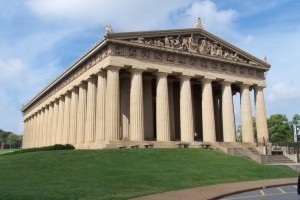What is the Size of Parthenon?
The Parthenon is regarded by many as one of the enduring symbols of the glory of ancient Greece. It also stands as a testament of the fruits of the Athenian democracy. Today, it is treasured as one of the world’s great cultural monuments. There are efforts driven at reconstruction and restoration of this masterwork of ancient Greece. We’ll go over the dimensions of this temple built in honor of the goddess Athena.
enduring symbols of the glory of ancient Greece. It also stands as a testament of the fruits of the Athenian democracy. Today, it is treasured as one of the world’s great cultural monuments. There are efforts driven at reconstruction and restoration of this masterwork of ancient Greece. We’ll go over the dimensions of this temple built in honor of the goddess Athena.
The Ancient Temple
What we see today as the Parthenon is not the first temple built by the Athenians as a temple for the goddess Athena. It is actually a replacement of the old temple that was destroyed. Historians call the older temple as the Older Parthenon, which was destroyed during the Persian Invasion in 480 BC.
Other than being a temple, the Athenians also used it as a treasury, which is basically another function of Greek temples in general. Other than the Athenians, the Delian League also used it as a treasury. However, it was converted to a church of Christianity that is dedicated in honor of the Virgin Mary.
Dimensions and Design
The architectural style of the Parthenon is classed under the classical style. Its construction began in 447 BC and was finally completed in 432 BC. Its diameter is at 69.5 m x 30.9 m or 228 feet by 101 feet. It has a cella that has dimensions of 29.8 m x 19.2 m or 98 feet by 63 feet. The architects of this structure were Kallikrates and Iktinos. The main structural engineer of this work is Phidias, who was also an architect, painter, and sculptor.
The width of the east side of this temple is 30.87 meters while its west side has a width of 30.88 meters. Its north side has a length of about 69.51 meters while the southern end has a length of about 69.51 meters as well. The ratio of its width to its height is 9:4. The builders of this temple used 13,400 stones to construct this tribute to their goddess protector. Its cost is estimated to be around 469 talents.
The peristyle columns you see within the Parthenon are around ten meters in height. It is interesting to note that these columns have a slight incline towards the center of the structure. The platforms on which the columns rest bows down to an arc that eventually brings the corners closer.
The Masterwork
The Parthenon is a masterwork of visual illusion, which tells us a lot about the genius of its creators. Their subtle visual feature and dimensions definitely sets it apart from the rest of the temples in Greece.





